-
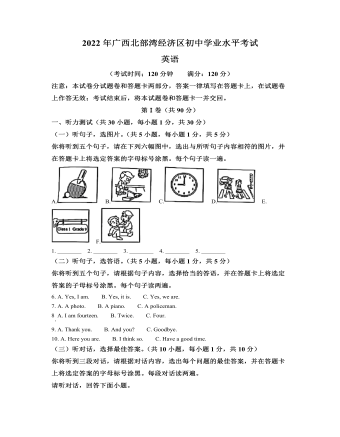
2022年广西北部湾经济区中考英语真题(解析版)
Ibelieved that I was right and he was wrong, and Tony believed that I was wrongand he was right. Our teacher, a kind and smart lady, decided to teach us alesson. She brought us to the front of the class and placed him on one side ofher desk and me on the other. In the middle of her desk was a large and roundobject. I could clearly see that it was black. The teacher asked us what colorthe object was. “White,” Tony answered. I couldn’t believe he said the objectwas white! “Clearly, it was black!” Another argument started between Tony andme, this time about the color of the object.
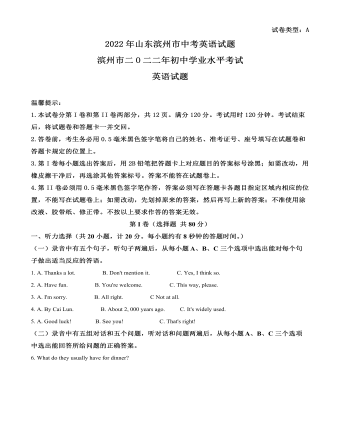
2022年山东省滨州市中考英语真题(解析版)
Everyone knows how similar chimpanzees (黑猩猩)are to humans. So it’s no surprise that their greetings are also close to ours.The most common ways of greeting between chimpanzees are hand touching andhugging. Sometimes they also kiss each other. Some chimpanzees can even learnsimple sign language.
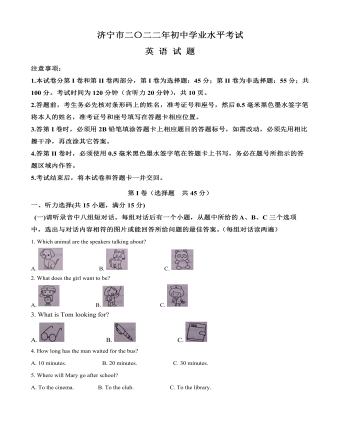
2022年山东省济宁市中考英语真题(解析版)
Raden Roro Hendarti, nearly 50 years old, is alibrarian in Muntang village. She started a “trash library”, hoping to makechildren read more as well as make them realize the importance of environmentprotection. Each weekday, Raden puts all kinds of books on the back of herthree-wheeler (三轮车)and rides to Muntang village. There, children line up to exchange plastic cups,bags and other trash for books from Raden’s mobile library. After finishing theexchange, Raden carries back all the trash.
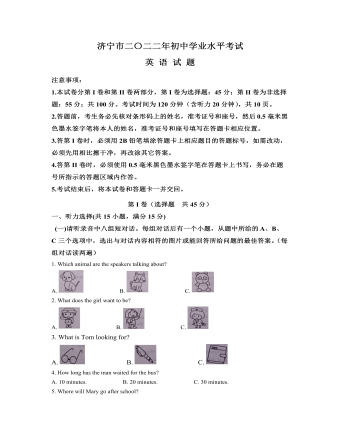
2022年山东省济宁市中考英语真题(原卷版)
Each ofthem has their own experience- two people with synesthesia may both “feel”music, but they almost never feel the music in the same way. For example, onemay feel the music of the violin lightly brushing his face; the other may feelit on her ankle (脚踝). And one’s experience of synesthesia is alwaysthe same. If they see the number 5 in the color blue, then 5 is blue every timethey see it.
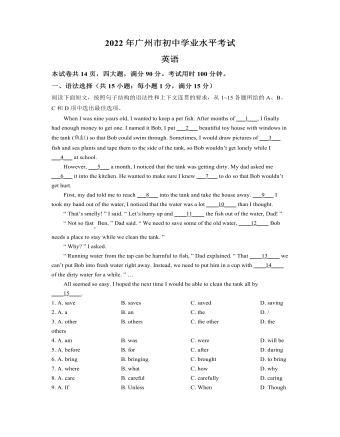
2022年广东省广州市中考英语真题(原卷版)
Slowlybut surely, Amy and her grandparents were making progress. Boxes of all sizeswere placed on top of each other throughout the house. Amy’s grandparents hadlived in the house for years and they had collected many things.
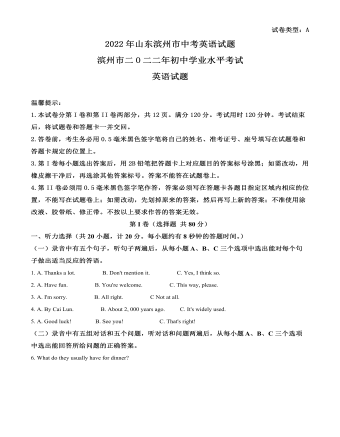
2022年山东省滨州市中考英语真题(原卷版)
As thegovernment encourages the renaissance (复兴) of traditional culture,Hanfu is getting more and more popular with the teenagers. Every year, we canenjoy different Hanfu shows around the cities. And now quite a few Hanfu clubshave been set up in universities. Members usually wear Hanfu at theirgraduation ceremonies or during holidays. Some even wear Hanfu on regular days,too. And these fans created a special day—China Haniu Day to celebratetraditional Chinese clothing. It falls on the third day of the third month inChinese lunar calendar (阴历).
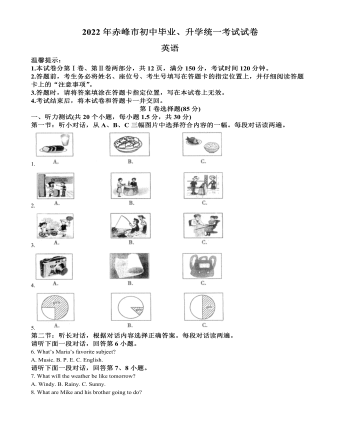
2022年内蒙古赤峰市中考英语真题(原卷版)
We allknow that rice, wheat and corn are staples, but do you know there is anotherkind of staple food—potatoes? Potatoes have many advantages. Theyare a good source of vitamin C and potassium(钾). A potato’s vitamin C isas rich as 10 apples. What’s more,potatoes are low in calories(卡路里)-onlythree fourths of the same amount of wheat and corn, according to People’s Daily. Potatoes are easy togrow. It can be grown in both the north and the south during winter, spring andautumn. The plant is also able to bear drought(干旱). Some areas of China arefacing water shortages, so the potato is safe to grow.
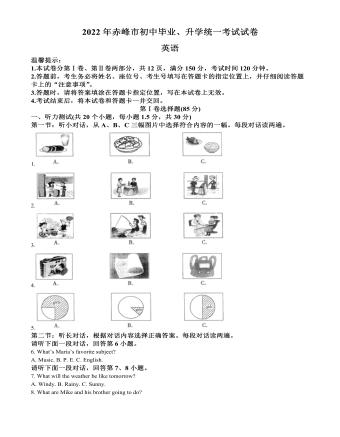
2022年内蒙古赤峰市中考英语真题(解析版)
Chopsticksoriginated from(起源于) China.Though simple and little, they are agreat invention in the history of humans. There are many legends aboutChopsticks, Da Yu and Chopsticks is one of them.It issaid that during Yao and Shun times, Shun ordered Yu to control the flood. Oneday, Yu took a boat to an island, he was so hungry that he used an earth pot tocook meat. After the meat was well-done in boiled water, he didn’t want towaste time to wait for it to cool, so he took two branches to pick up the meatfrom the soup. After, to save time, he always took small branches to take outfood from the hot pot. For a long time, he was skilled at picking up food withsmall sticks. In this way, the first types of chopsticks were born.
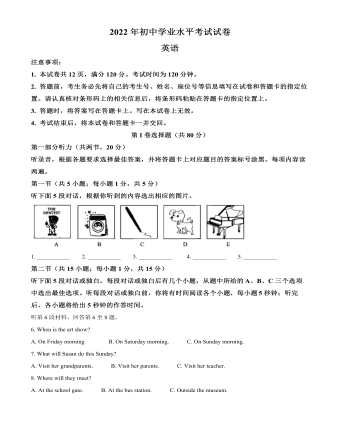
2022年内蒙古包头市中考英语真题(解析版)
Mostschools offer different kinds of subjects and activities for students, but someschools offer additional training in certain areas, such as the performing andarts. In this way, schools can help students develop their artistic talentsfrom an early age and have greater success in their future profession. THE ROYAL BALLET(芭蕾舞)SCHOOL
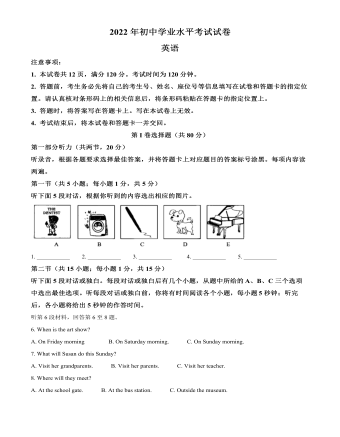
2022年内蒙古包头市中考英语真题(原卷版)
Locatedin the mountains about 100 miles from Los Angeles, the Idyllwild Arts Academyis a boarding school for young artists. It offers training in arts, likedrawing, painting, photography and cinema, along with programmes for theperforming arts. The school’s quiet, rural location also makes it a verypeaceful and beautiful place to learn. THE NATIONAL CIRCUS(杂技)SCHOOL
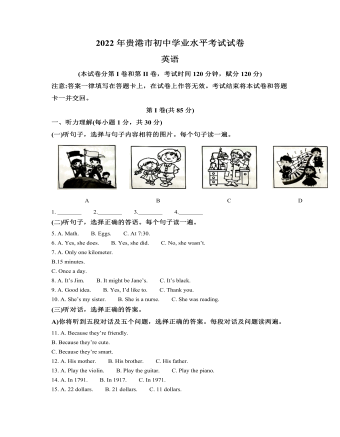
2022年广西贵港市中考英语真题(解析版)
TheChinese knot, a folk art, has a long history. People first made them to recordinformation and send messages before they started to use words. The knots wereused for decoration (装饰) and to express thoughts and feelings in theTang Dynasty. They were later popular in the Ming and Qing dynasties. But thisart wasn’t really accepted by the common people until the Qing Dynasty.
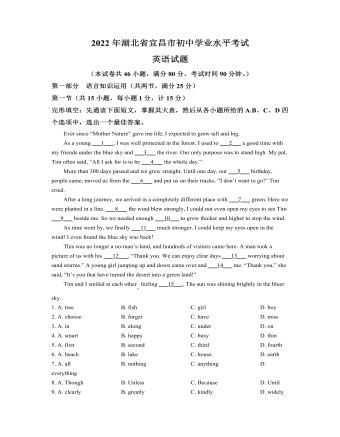
2022年湖北省宜昌市中考英语试题(原卷版)
Why do you need hobbies? A study has found thatpeople are more positive (积极的) when they take part in a relaxing activity. ___36___Scientists also think they might be good for your brain.
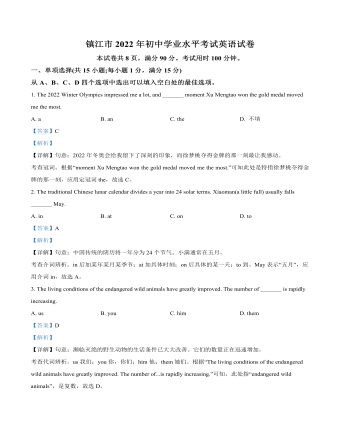
2022年江苏省镇江市中考英语真题(解析版)
Lastsummer, I was holding the net when Grandpa asked me ____19____ I couldhelp him teach Frank how to play chess. I said no because I wanted to catchfish. Grandpa had been the one who’d taught us how to catch fish, but then the ____20____ made him stay behind.

2022年江苏省泰州市中考英语真题(解析版)
If youthink you have walked into a library with a ____11____ likethat, you are exactly wrong. ____12____, you’ve entered the workplace of CourtneyHolmes, known as the Storybook Barber (理发师).
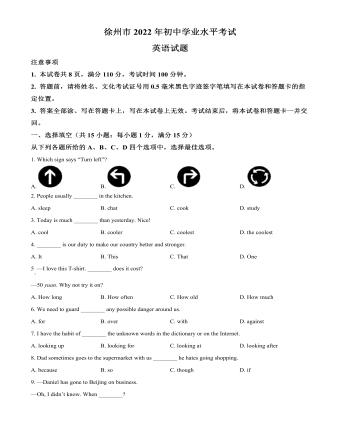
2022年江苏省徐州市中考英语真题(原卷版)
Dudiscovered his interest in folding paper in his childhood. After Du went tocollege in 2017, he had enough time to take the hobby seriously. He learnedfolding from online teachers and experts. Later he copied patterns from books.He spent almost three years improving his basic skills by making copies ofother artists’ designs. Then he made his own creations.
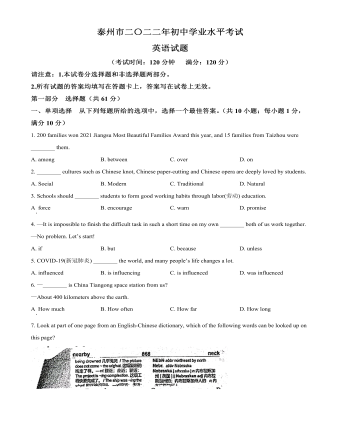
2022年江苏省泰州市中考英语真题(原卷版)
Shuttlecock exercise doesnot require equipment(装备) and is perfect for people to perform at home.Liu Genghong helps you to keep going until the last minute, and you can burnyour fat fast.

中班数学:图形朋友碰碰乐课件教案
2、运用图形连接创造简单的图像,初步体会图形组合的意义。准备1、形纸(供师生共同作画的纸较幼儿画纸大一倍)2、勾线笔、蜡笔(每人一、二支),方形打印纸。过程一、一起画图形。1、一起画大园和小园——始末线条碰一碰封口。2、一起画大方和小方——始末封口画方3、圆形拉一拉,变长了,名字叫椭圆——画一画大小不同的椭圆,尝试和园或方碰一碰连起来。4、方形拉一拉,变长了,名字叫长方——画一画和园、方连起来碰一碰的大小不同长方。二、图形朋友碰碰碰1、找一找图形朋友碰一碰以后像什么。(例如:人、动物、植物、交通工具等。)2、确定某个物体,添加图形碰一碰,表现局部特征。3、在轮廓线内涂色。碰出一个好朋友。
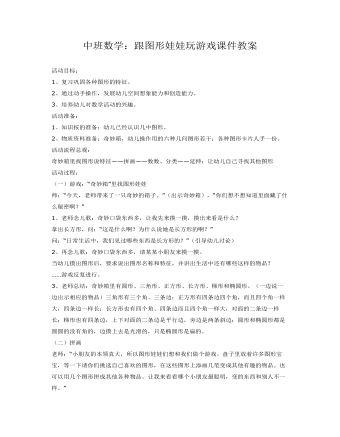
中班数学:跟图形娃娃玩游戏课件教案
2、通过动手操作,发展幼儿空间想象能力和创造能力。3、培养幼儿对数学活动的兴趣。活动准备:1、知识按的准备:幼儿已经认识几中图形。2、物质资料准备:奇妙箱,幼儿操作用的六种几何图形若干;各种图形卡片人手一份。活动流程总观:奇妙箱里找图形说特征——拼画——数数、分类——延伸:让幼儿自己寻找其他图形活动过程:(一)游戏:“奇妙箱”里找图形娃娃师:“今天,老师带来了一只奇妙的箱子。”(出示奇妙箱),“你们想不想知道里面藏了什么秘密啊?”1、老师念儿歌:奇妙口袋东西多,让我先来摸一摸,摸出来看是什么?拿出长方形,问:“这是什么啊?为什么说她是长方形的啊?”问:“日常生活中,我们见过哪些东西是长方形的?”(引导幼儿讨论)2、再念儿歌:奇妙口袋东西多,请某某小朋友来摸一摸。当幼儿摸出图形后,要求说出图形名称和特征,并讲出生活中还有哪些这样的物品?……游戏反复进行。
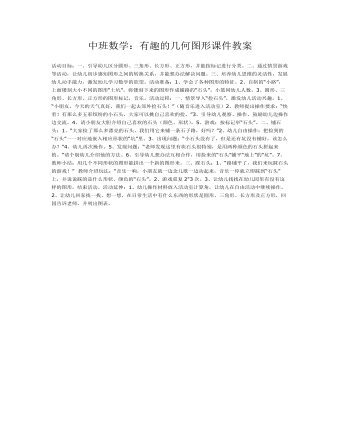
中班数学:有趣的几何图形课件教案
二、通过情景游戏等活动,让幼儿初步感知图形之间的转换关系,并能想办法解决问题。三、培养幼儿思维的灵活性,发展幼儿动手能力,激发幼儿学习数学的欲望。活动准备:1、学会了各种图形的特征。2、自制的“小路”,上面镂刻大小不同的图形“土坑”,将镂刻下来的图形作成铺路的“石头”。小篮同幼儿人数。3、圆形、三角形、长方形、正方形的图形标记,音乐。活动过程:一、情景导入“捡石头”,激发幼儿活动兴趣。1、“小朋友,今天的天气真好,我们一起去郊外捡石头!”(随音乐进入活动室)2、教师提出操作要求:“快看!有那么多五彩缤纷的小石头,大家可以挑自己喜欢的捡。”3、引导幼儿观察、操作,鼓励幼儿边操作边交流。4、请小朋友大胆介绍自己喜欢的石头(颜色、形状)。5、游戏:按标记举“石头”。
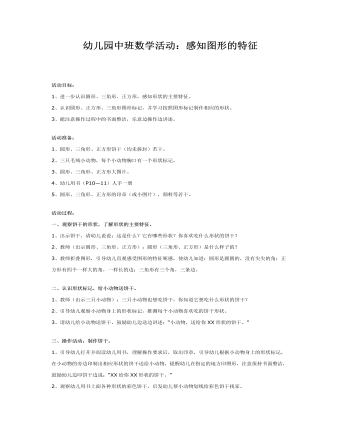
中班数学活动:感知图形的特征课件教案
2、认识圆形、正方形、三角形图形标记,并学习按照图形标记制作相应的形状。 3、能注意操作过程中的书面整洁,乐意边操作边讲述。 活动准备: 1、圆形、三角形、正方形饼干(均未拆封)若干。 2、三只毛绒小动物,每个小动物胸口有一个形状标记。 3、圆形、三角形、正方形大图片。 4、幼儿用书(P10—11)人手一册 5、圆形、三角形、正方形的印章(或小图片),颜料等若干。 活动过程: 一、观察饼干的形状,了解形状的主要特征。1、出示饼干,请幼儿说说:这是什么?它有哪些形状?你喜欢吃什么形状的饼干? 2、教师(出示圆形、三角形、正方形):圆形(三角形、正方形)是什么样子的? 3、教师折叠图形,引导幼儿直观感受图形的特征呢感,使幼儿知道:圆形是圆圆的,没有尖尖的角;正方形有四个一样大的角,一样长的边;三角形有三个角,三条边。

